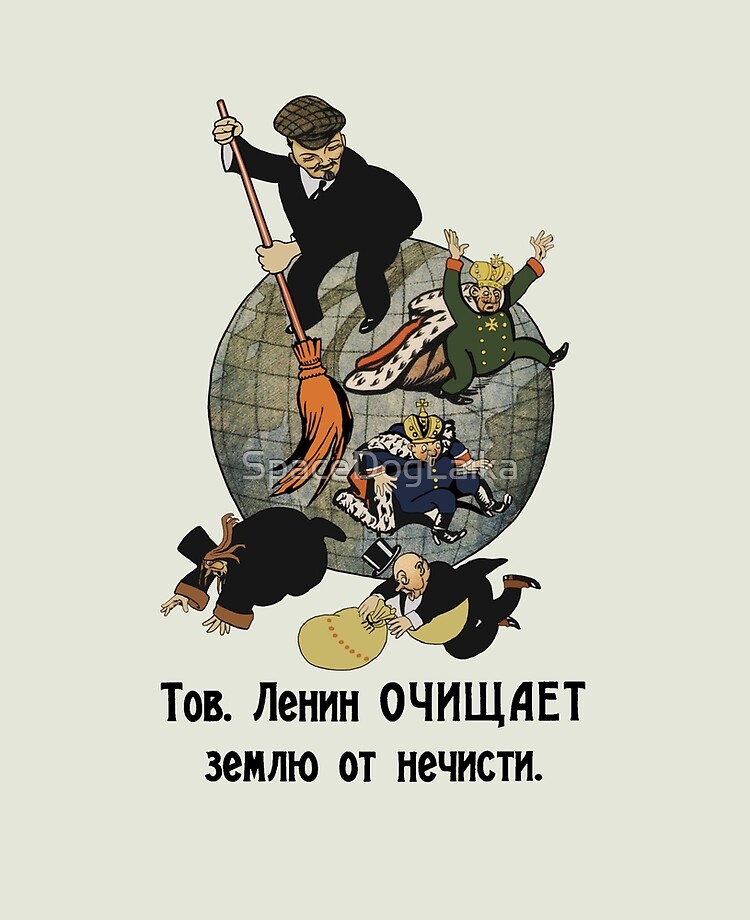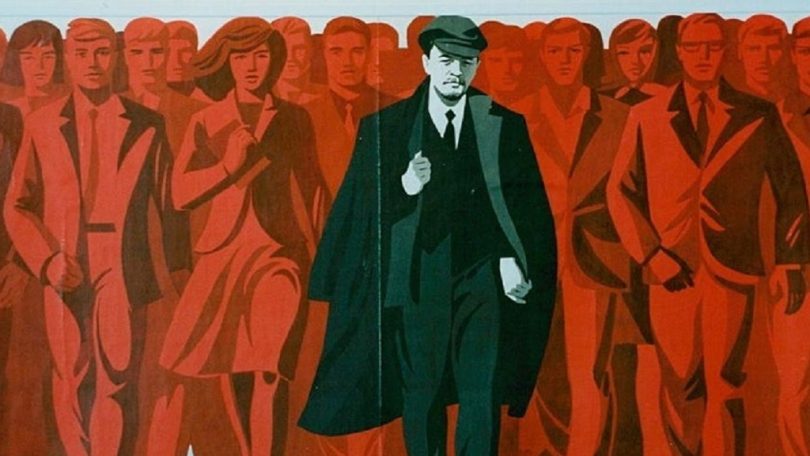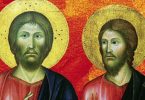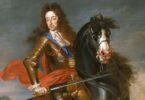A hundred years after the Bolsheviks swept to power, historians and contemporaries still struggle to understand the prominent role played by Jews.
By Seth J. Frantzman
From JewishPost

On April 9, 1917, a train pulled into a station at Thayngen, a Swiss town on the German border. There was a group of 32 Russians on board and the customs officials confiscated chocolate and sugar from them. The passengers were exceeding the legal limit on importation of goods. Then the train shuffled in to Gottmadingen on the German side of the border. Two German soldiers boarded the passenger cars and separated the Russians from the rest, moving them to second- and third-class berths.
The “Russians” were an eclectic group, including 10 women and two children. Their names would have been known in left-wing and revolutionary circles of the time, so some traveled under aliases. On board was Karl Radek from Lvov in what is now Ukraine, and Grigory Zinoviev and his wife, Zlata, also from Ukraine. There was the half-Armenian Georgii Safarov and his wife as well as Marxist activist Sarah “Olga” Ravich. Grigory Useivich from Ukraine was accompanied by his wife Elena Kon, the daughter of a Russian woman named Khasia Grinberg. The vivacious French feminist Inessa Armand sang and cracked jokes with Radek, Ravich and Safarov. Eventually their shouting angered the leader of the group, who poked his head into their berth and scolded them. The leader was Vladimir Lenin, and he was taking his small group by sealed train for a weeklong journey that would end at Finland Station in St. Petersburg. Half a year later Lenin and some of his cohorts would be running a new state, the Russian Soviet Republic.
Some observers saw Lenin and his band as a motley group of Jewish revolutionaries. Alexander Guchkov, the Russian minister of war in the Russian Provisional Government after Tsar Nicholas II abdicated in March 1917, told the British military attaché General Alfred Knox that “the extreme element consists of Jews and imbeciles.” Lenin’s train had included 19 members of his Bolshevik party, several of his allies among the Mensheviks and six Jewish members of the Jewish Labor Bund. Almost half the passengers on the train were Jewish.

Yet history has largely forgotten them. Catherine Merridale’s recent Lenin on the Train doesn’t delve into the preponderance of Jews. A recent article in The New Yorker about “Lenin and the Russian Spark,” chronicling 100 years since the journey, entirely discounts the Jewish aspect of the revolutionaries.
The reason for this is complicated and tied up with notions of antisemitism as well as attempt by the revolutionaries themselves to whitewash their ethnic and religious differences. Even though Lenin often praised Jews in his circle, his wife Nadezhda Krupskaya’s own Reminiscences of Lenin (1933) sought to remove these touchy subjects in line with Soviet policy.
A hundred years after the Russian Revolution, there is nostalgia and renewed interest in those figures who led it and the tragedies it unleashed. The 2016 Spanish film The Chosen follows Ramon Mercader, the assassin of Leon Trotsky, and this year’s British film The Death of Stalin turns that event into something of a comedy. In Russia, a new series looks at Leon Trotsky. Producer Konstantin Ernst told the Guardian, “I think he [Trotsky] combines everything, good and evil, injustice and bravery. He’s the archetypal 20th-century revolutionary. But people shouldn’t think that if Trotsky had won and not Stalin, things would have been better, because they wouldn’t have been.”
The question of “what might have been” is uniquely tied to Trotsky because he often symbolized the anti-Stalinist, the wild revolutionary with global impulses and intellectual imagination, as opposed to the doer and statist Stalin with his murderous purges. Part of that motif is tied up in Trotsky’s Jewishness and the larger number of Jewish revolutionaries, activists and followers who were attracted to Communism in the late 19th century.
The role of Jews in the Russian Revolution, and by extension Communism writ large, has always been a sensitive subject because antisemitic voices often painted Soviet Communism as a Jewish plot, or “Jewish Bolshevism.” When Alexander Solzhenitsyn began work on a book called 200 Years Together, he was criticized for what touching this taboo issue. His own comments to the press didn’t help the matter, claiming two-thirds of the Cheka (secret police) in Ukraine were Jewish.
“I will always differentiate between layers of Jews. One layer rushed headfirst to the revolution. Another, to the contrary, was trying to stand back. The Jewish subject for a long time was considered prohibited.” Unsurprisingly, his book has been posted in PDF form on antisemitic websites.
On October 16, the Jewish Museum and Tolerance Center in Moscow hosted an exhibition called “Freedom for All? The History of One People in the Years of Revolution.” With exhibitions and first-person accounts, it focused on Jewish luminaries of the era, such as Trotsky, Julius Martov, Marc Chagall, Vera Inber, Simon Dubnov and Vasily Shulgin.
Dubnov, born in 1860 in what is now Belarus, was an enthusiastic Jewish activist. A professor of Jewish history in St. Petersburg (then called Petrograd), he supported Jewish self-defense units and literature and thought the revolution would bring equality. However, he left in dismay in 1922, eventually settling Riga, Latvia. He was murdered by the Nazis in 1941. Before his death he reflected on Jews like Trotsky who joined the Revolution.
“They appear under Russian pseudonyms because they are ashamed of their Jewish origins. It would be better to say that their Jewish names are pseudonyms; they are not rooted in our people.”
Winston Churchill agreed. In a piece in the Illustrated Sunday Herald in 1920, he broadly stereotyped Jews as either “international” communists, loyal nationalists or Zionists. He called it the “struggle for the soul of the Jewish people” and claimed the Jewish role in the Russian Revolution “probably outweighs [the role] of all others. With the notable exception of Lenin, the majority of the leading figures are Jews.”
Churchill claimed that the driving power came from Jewish leaders, who eclipsed their counterparts. He named names: Maxim Litvinoff, Trotsky, Grigory Zinoviev, Radek, Leonid Krassin. He called this tendency “astonishing” and accused Jews of playing “the prominent, if not indeed the principal part in the system of terrorism” that had then become known as “red terror” or the suppression of those in the Soviet Union who deviated from the communist line.
One of those whom Churchill singled out for opprobrium was Bela Kun, the Hungarian Jew who briefly played the leading role in Hungary when it was a Soviet republic in 1919. Kun fled when Hungary was invaded by Romania, fleeing to the Soviet Union where he was put in charge of the Revolutionary Committee in Crimea along with Rosalia Zemlyachka. Their regime there was responsible for murdering around 60,000 people. Kun was arrested during Stalin’s purges, accused of promoting “Trotskyism” and executed in 1938. His life was symbolic of so many others: a young revolutionary whose idealism was colored by the murderous methods of Communism and who ended up a victim of the very regime he sought to create, like so many Jewish revolutionaries, accused of being counter-revolutionaries.
How did it all go so wrong? To look for some answers, YIVO Institute for Jewish Research held a conference on Jews in and after the Russian Revolution earlier this month in New York City. In the introduction to the conference they note the paradoxical role of Jews and their fate during the revolution.
“The Russian Revolution liberated the largest Jewish community in the world. It also opened the floodgates for the greatest massacre of Jews before the Second World War amid the civil war and its aftermath in 1918 to 1921.” However, Jews also “entered into nearly every sphere of Russian life while, in time, much of the singular richness of Jewish cultural life in Russia was flattened, eventually obliterated.”
The roughly three million Jews of the Soviet Union at the time of the revolution constituted the largest Jewish community in the world, but they were only around 2% of the USSR’s population. They were concentrated in the Pale of Settlement (a western region of Imperial Russia) and in Ukraine and Belarussia, where they were 5% to 10% of the population, whereas in Russia itself the 1926 census found only 600,000 Jews.
As a group in the vastness of the USSR, they were one of the largest minorities, alongside Georgians, Armenians, Turks, Uzbeks, Kazakhs, Kyrgiz, Tartars, Moldovians, Poles and Germans. None of these other groups played such a central role in the revolution, although members of many of them rose to senior levels. Stalin was a Georgian. Felix Dzerzhinsky, who established the Soviet secret police, was a Polish aristocrat.
Given the Soviet Union’s complexity and predilection for numerous layers of bureaucracy it is a difficult to quantify the number of Jews throughout senior leadership positions during and just after the revolution of 1917. Half of the top contenders in the Central Committee of the Communist Party to take power after Lenin’s health declined in 1922 – Lev Kamenev, Trotsky and Zinoviev – were Jewish. Yakov Sverdlov, the chairman of the All-Russian Central Executive Committee from November 1917 to his death in 1919, was Jewish. Born in 1885, he had joined the Russian Social Democratic Party in 1902 and became a member of the Bolshevik faction with Lenin early on. Like others of his generation he took part in the 1905 revolution. His father converted to Russian Orthodoxy.
The large number of Jews in leading parts of the party was not lost on those non-Jews around them. V.M. Molotov, the powerful foreign minister of the Soviet Union under Stalin, made many remarks about Jews to Felix Chuev in a series of conversations between 1969 to 1986 that became the basis for the 1991 book Molotov Remembers. He recalled that as Lenin lay dying “at the time Jews occupied many leading positions, though they made up only a small percentage of the country’s population.” Of Zinoviev, he recalled, “He didn’t even look like a Jew.”
Antisemitism was an issue within the party. Molotov recalled in 1912 when he was at the Russian newspaper Pravda, “We received a letter from [Nikolay] Krestinsky. He wrote that Lenin was an antisemite.” This was because Lenin had opposed the Mensheviks, a separate communist faction.
“Almost all the Mensheviks were Jews. Even among the Bolsheviks, among the leaders there were many Jews. Generally, Jews are the most oppositional nation. But they were inclined to support the Mensheviks.”
Molotov also claimed that many of the men around Stalin had Jewish wives.
“There is an explanation. Oppositionist and revolutionary elements formed a higher percentage among Jews than among Russians. Insulted, injured and oppressed, they were more versatile. They penetrated everywhere, so to speak.” He claimed that Jews were more “active” than average Russians.
“Biding their time, they sniff around, stir things up, but are always prepared.” Molotov also acknowledged Zionism’s pull on Jews. “The Jews had long struggled for their own state under a Zionist flag. We, of course, were against Zionism. But to refuse a people the right to statehood would mean oppressing them.”
The fork in the road of history that led some Jews in the Russian Empire to embrace Zionism and many others to embrace various leftist revolutionary movements that eventually led to the Soviet Union was reached in the 19th century. Beginning in 1827, the Russian Empire sought to modernize its army through a universal draft. Jews had to serve 25 years and their own communities had to choose approximately four conscripts for every 1,000 members of the community (1,500 to 3,000 a year), according to the YIVO Encyclopedia.
Although non-Jews served the same amount of time, Jews were recruited at age 12 and not 18 like others, which led to their “Russification.”
Tsar Alexander II abolished this system and allowed Jews to move out of the Pale of Settlement into Russian cities, such as Moscow and St. Petersburg.
“As a result of these policies, many Jews became more involved in the cultural and intellectual life of Russia,” notes the Center for Israel Education in Atlanta. After Alexander II was assassinated in 1881, a wave of hundreds of pogroms swept the country.
New restrictions were imposed, limiting where Jews could live and work. This helped cause a vast migration of Jews abroad, including 2.3 million who left for the New World between 1881 and 1930.
When Theodor Herzl visited the Russian Empire in 1903, he met Count Witte, the minister of finance. According to Leonard Schapiro, who authored The Role of the Jews in the Russian Revolutionary Movement in 1961, Herzl found that “50% of the membership of the revolutionary parties was Jewish.” Herzl asked Witte why.
“I think it’s the fault of our government. The Jews are too oppressed.” Schapiro argues that Jews moved into revolutionary circles as they gained access to intellectual circles. Ironically then, the more Jews gained wealth and freedom in the empire, the more they also awakened to their predicament and joined the slow gurgling rebellion against the ancient regime.
Distinct choices emerged among Jews. Many, like former Israel prime minister Golda Meir’s family, went to the New World. Around 40,000 decided to move directly to the Land of Israel, becoming the leading members of what became known as the First Aliya. Among those were men like Joseph Trumpeldor, who was born in Pyatigorsk, Russia, in 1880 and moved to Ottoman Palestine in 1911 after serving in the Russian army. Isaac Leib Goldberg, the founder of the Hovevei Zion movement in 1882, was born in Poland in 1860 but grew up under the Russian Empire, and played and influential role in Zionist circles, co-founding Haaretz in 1919.
Immigrant Jews founded the Society for the Support of Jewish Farmers and Artisans in Syria and Eretz Israel in 1890, which helped settle Rehovot and Hadera. Often called the “Odessa Committee,” this group had over 4,000 members. Similarly, the Bilu group founded in Kharkov sent its members to found Gedera in Palestine.
Jews embraced self-defense in reaction to the pogroms as well. The writer Leon Pinsker from Odessa was emblematic of that awakening, turning from embracing assimilation to realizing that Jews would always suffer antisemitism as the proverbial outsiders.
Pinsker’s friend Meir Dizengoff, a veteran of the Russian army, was the first mayor of Tel Aviv. Among the founders of the first self-defense organization in Palestine, called Hashomer, were Alexander Zaid from Siberia and Yitzhak Ben-Zvi from Poltava in Ukraine.
Of those millions who chose to stay under the empire, many fought for Jewish rights in Russia. Maxim Vinaver, a resident of St. Petersburg from 1906 to 1917, was born in 1862 in Warsaw. A lawyer, he founded the Party of Popular Freedom (Constitutional Democratic Party-Kadets) and was chairman of the League for the Attainment of Equal Rights for the Jewish People in Russia (Folksgrupe). Described as a “tall, imposing, cultured man” by the Russian Jewish Encyclopedia, he was elected to the first State Duma created in the wake of the 1905 revolution. He arrived alongside 12 other Jewish deputies out of 478. Two of these Jews were Shmaryahu Levin and Leon Bramson, who had the support of the Jewish Labor Bund. Levin went on to support the creation of the Technion in Israel, and Bramson helped found ORT. Another Jew elected was Nissan Katznelson, a friend of Herzl.
Vinaver came to lead the group of Jews in the Duma and pressed for equality of minorities in the empire. “We Jews represent one of the nationalities which have suffered more, yet never once have we spoken only about ourselves. For we consider it to be inappropriate to speak just of this and not of civil equality for all,” he said in a speech.
Vinaver created and chaired a cornucopia of Jewish groups, including the Jewish National Group, the Jewish Society for the Encouragement of the Arts and Jewish Historical-Ethnographic Society. In contrast to Jews who gravitated toward more radical communist groups, or toward Zionism, Vinaver represented those who sought equality in the empire in a milieu that was proudly Jewish.
Trotsky’s 1930 autobiography My Life sought to downplay his Jewishness. Lessons at school on the Jewish people “were never taken seriously by the boys,” he writes in discussing his Jewish classmates. Although he admits the discriminatory atmosphere of the 1880s and he lost a year of schooling due to anti-Jewish quotas, he writes, “In my mental equipment, nationality never occupied an independent place, as it was felt but little in everyday life.”
Furthermore, he argues that although “national in-equality probably was one of the underlying causes of my dissatisfaction with the existing order, it was lost among all the other phases of social injustice. It never played a leading part, not even a recognized one in the lists of my grievances.”
Of particular interest, Trotsky never mentions the word “Jew” after his fifth chapter dealing with his early education up to the year 1891. Despite being surrounded by Jews, he buries this ethnic and religious issue entirely.
How could he skip over the Jewish context when it was all around him? Stepan Mikoyan, born in 1922, a test pilot and son of prominent Stalin-era politician Anastas Mikoyan, wrote an autobiography in 1999. In it, he calls Stalin a “militant antisemite.” Molotov, however, insisted that Stalin was “not an antisemite… he appreciated many qualities in the Jewish people: capacity for hard work, group solidarity and political activeness.”
However, being from a non-Russian minority, Stalin always seemed suspicious of this other minority group. When he was commissar of nationalities from 1917 to 1924, he was called upon to investigate a “mess,” according to Molotov. He didn’t appoint a single Jew to the committee and Lenin wondered why. Trotsky’s aversion to seeing himself in a Jewish context likely derived from the early disputes in 1904 when the revolutionaries had to decide whether Jews would be included as a distinct group in the organization.
FOR THE Jewish revolutionaries, the years from 1904 to the revolution were spent in a fever of activity. In 1904, a dispute at the Russian Social Democratic Labor Party between Julius Martov and Lenin led to the creation of Lenin’s Bolsheviks and Martov’s Mensheviks.
Martov was Jewish, as were many Mensheviks. At the heart of the debate that led to the split in the RSDLP was a dispute over whether the General Jewish Labor Bund (the “Bund”), which had cofounded the RSDLP in 1898, could remain an autonomous group. This was a harbinger of things to come. Eventually those Bund leaders, such as Mikhail Liber, who sought to remain part of the revolution, but distinctly Jewish, would be sent into exile or shot in the 1930s. Martov left Russia in 1920, calling the civil war that erupted after the revolution a “growing bestiality of men.” He died in exile. Some Jewish Bundists remained in the USSR and rose to senior positions. Israel Leplevsky from Brest-Litovsk became minister of internal affairs of Ukraine before being arrested and shot in 1938. David Petrovsky from Berdychiv became an influential economic planner until being arrested and shot in 1937. His wife, Rose Cohen, a founder of the Communist Party of Great Britain, was also shot.
Trotsky’s life before the revolution is more instructive of the networks of Jewish Bolsheviks. Arrested in 1906, he was sent into exile by the tsarist state. He escaped and made his way to Vienna, where he became friends with Adolph Joffe. Joffe came from a family of Jewish Crimean Karaites and became an editor of Pravda. Close friends for the rest of their lives, they opposed the more lenient attitude of their fellow Jews Kamanev and Zinoviev on the Central Committee in 1917, opposing the inclusion of other socialist parties in the government that emerged after the revolution. Trotsky was expelled from the Central Committee in 1927 along with Zinoviev. He went into exile in 1929 and was assassinated on Stalin’s orders in 1940. Joffe committed suicide in 1927; his wife Maria and daughter Nadezhda were arrested and sent to labor camps and were not released until after Stalin’s death in 1953.
Late in life, as many thousands of Jews were being executed in the purges by Stalin, not as Jews but as leading communists, Trotsky penned several thoughts on Jewish issues. He said that in his early days, “I rather leaned toward the prognosis that the Jews of different countries would be assimilated and that the Jewish question would thus disappear.” He argued, “Since 1925 and above all since 1926, antisemitic demagogy – well camouflaged, unattackable – goes hand in hand with symbolic trials.” He accused the USSR of insinuating that Jews were “internationalists” during show trials.
The Central Committee of the USSR is instructive as an indicator of the prominence of Jews in leadership positions. In the Sixth Congress of the Bolshevik Russian Social Democratic Labor Party and its Central Committee elected in August 1917, we find that five of the committee’s 21 members were Jewish. This included Trotsky, Zinoviev, Moisei Uritsky, Sverdlov and Grigori Sokolnikov. Except for Sverdlov, they were all from Ukraine. The next year they were joined by Kamenev and Radek. Jews made up 20% of the central committees until 1921, when there were no Jews on this leading governing body.
The high percentage of Jews in governing circles in these early years matched their percentage in urban environments, politburo member Sergo Ordzhonikidze told the 15th Congress of the party, according to Solzhenitsyn. Most Jews lived in towns and cities due to urbanization and laws that had kept them off the land.
Jewish membership in top circles continued to decline in the 1920s. By the 11th Congress, only Lazar Kaganovich was elected to the Central Committee in 1922 alongside 26 other members. Subsequently few Jews served in these leadership positions. In 1925 there were four Jews out of 63 members. Like the rest of their comrades, almost all of them were killed in the purges. Others elected in 1927 and 1930 were shot as well, including Grigory Kaminsky, who came from a family of blacksmiths in Ukraine. With the exception of Lev Mekhlis and Kaganovich, few senior communist Jews survived the purges.
During the 1936 Moscow Trials, numerous defendants were Jewish. Of one group of 16 high-profile communists at a show trial, besides Kamenev and Zinoviev, names like Yefim Dreitzer, Isak Reingold, Moissei and Nathan Lurye and Konon Berman-Yurin ring out as Jewish. In a twisted irony, some of these Bolsheviks who had played a prominent role executing others, such as NKVD Director Genrikh Yagoda, were themselves executed. Solzhenitsyn estimates that Jews in leading positions went from a high of 50% in some sectors to 6%. Many Jewish officers in the Red Army also suffered in the purges. Millions of Jews would remain in Soviet territories, but they would never again obtain such prominent positions in the USSR.
In a July 1940 letter, Trotsky imagined that future military events in the Middle East “may well transform Palestine into a bloody trap for several hundred thousand Jews.” He was wrong; it was the Soviet Union that was a bloody trap for many of those Jews who had seen salvation in communism and thought that by total assimilation and working for a zealous greater good they would succeed.
Instead, many ended up being murdered by the system they helped create.
With 100 years of hindsight it is still difficult to understand what attracted so many Jews to communism in the Russian empire. Were their actions infused with Jewishness, a sense of Jewish mission like the tikkun olam and “light unto the nations” values we hear about today, or were their actions strictly pragmatic as a minority group struggling to be part of larger society? The answer lies somewhere in the middle.
Many Jews made pragmatic economic choices to leave for the New World when facing discrimination and poverty. Others chose to express themselves as Jews first, either through Jewish socialist groups or Zionism. Still others struggled for equality in the empire, so they could remain Jews and be equal. One group sought a radical solution to their and society’s predicament, a communist revolution, and one that would not include other voices such as the Bund or Mensheviks, but solely that of their party. They had no compunction at murdering their coreligionists. They were not more or less ethical than their non-Jewish peers. How can we explain their disproportionate presence in the leadership of the revolution? It would be as if the Druse minority in Israel made up half of Benjamin Netanyahu’s cabinet, or Armenians were half of Emmanuel Macron’s government in France.
Perhaps the only way to understand some of it is to recognize that at Nelson Mandela’s 1963 Rivonia trial in South Africa, five of the 13 arrested were Jewish, as were around one quarter of the 1960s Freedom Riders in the US. The 20th century was a century of Jewish activism, often for non-Jewish causes and often without an outwardly “Jewish” context. The Freedom Riders didn’t go as a “Jewish voice for African- Americans,” they went as activists for civil rights.
We prize minorities today who act for social justice as minorities, but the 20th century required a more nuanced approach. The situation Jews were born into in the 19th-century Pale of Settlement has no parallel with today’s Jewish experience. But despite economic hardship there was a spark in this community amidst unique circumstances of radical change that impelled it forward to leadership in numerous sectors in Russia and abroad.
Source: https://www.jpost.com/magazine/was-the-russian-revolution-jewish-514323
Comments:
GreenFish
No mention of the jewish bankers who funded the revolution!







